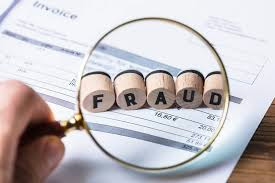Even with the advantages of electronic payment systems in terms of efficiency and security, many organisations still prefer to use checks. This continued reliance on checks makes them a prime target for fraudsters. Despite the rise in business email compromise and ransomware threats in today’s digital landscape, check fraud remains a favoured method due to its relative simplicity.

In the last year, clients of JPMorgan Chase Commercial Banking have reported a surge in check fraud attempts. Many of these incidents could have been avoided if clients had taken advantage of the bank’s fraud prevention tools.
Criminals often seize opportunities presented by disruptions in business operations, emergencies, and notable news events to initiate new schemes related to check fraud.
“Many companies mistakenly believe that infrequent check writing means low risk, but just one significant check can lead to considerable financial loss,” noted John Geronimo, Fraud Strategy Director for Commercial Banking. “It is crucial for every organisation to verify and authenticate payment requests before disbursing funds, as well as to be aware of the inherent risks associated with checks and utilise the fraud protection options available for their accounts.”

If even a single check is misappropriated, it can compromise your account and routing information. Below are some strategies to help reduce the risk of various check fraud schemes.
Types of Check Fraud
Counterfeit Checks
When criminals gain access to an organisation’s account and routing numbers, along with the name and signature style of an authorised signer, they can create counterfeit checks that appear legitimate using printers and desktop publishing software. Fraud protection services like Positive Pay and Reverse Positive Pay assist clients in detecting and preventing payments on counterfeit checks. It’s essential to use these features correctly; otherwise, clients may bear the financial responsibility for any losses incurred.

Altered Checks
In this type of fraud, the perpetrator modifies either the name or the amount on a check before cashing it. Thankfully, clients of JPMorgan Chase can utilise Positive Pay with Payee Name Verification to ensure that a check’s details—such as the account number, serial number, dollar amount, issue date, and payee name—align with the company’s records. This feature serves as a safeguard against altered checks; however, relying solely on Positive Pay may not always identify fraudulent alterations. If a client does not fully utilise all functionalities of Positive Pay, they may be held accountable for any losses that could have been avoided due to altered checks.
Forged, Missing, or Incorrect Endorsements
In this scenario, a criminal forges the signature on the back of a check and deposits it at a financial institution. Alternatively, they might neglect to endorse the check entirely or have one party incorrectly endorse a check made out to two parties. Unlike most cases of altered or counterfeit checks, fraud protection tools typically cannot identify missing or incorrect endorsements.
To reduce the risk of this kind of fraud, it is advisable to set thresholds that require electronic payment methods for amounts above a specific limit. If sending a check is unavoidable, utilising courier services or other secure delivery options can help protect against theft during transit. Additionally, it’s wise to proactively verify with recipients of high-value checks to confirm their receipt.
Mobile Deposit Fraud

The ease of using mobile devices for check deposits has led to a significant rise in this form of fraud. In this scenario, a business issues a check to an individual who then scans both sides of the check and deposits it remotely into their bank account. The fraudster subsequently takes the original physical check to another bank or check-cashing outlet to cash it again.
When the paper check is submitted for payment to the originating bank a few days later, that bank will reject the check as a duplicate. The returned dishonoured check goes back to the institution that initially cashed it, potentially initiating a lengthy and costly claims process. The organisation in possession of the physical check might pursue legal action against the issuer of the check. To prevent mobile deposit fraud, it’s advisable to make electronic payments directly to recipients instead of issuing checks.

ACH Debit Fraud
This type of fraud is linked to check fraud, even though it does not involve physical checks. Criminals can exploit the routing and account numbers present on checks to initiate ACH debits from a company’s accounts. To mitigate this risk, businesses should utilise JPMorgan Chase’s ACH debit blocking or filtering services, conduct daily transaction reconciliations, and promptly contest any unauthorised ACH debits.
Internal Client Fraud
Protecting against internal check fraud is a critical concern for all organisations. This form of fraud often develops over time and may involve multiple checks. The perpetrator could be an employee of the client, such as an assistant privy to the organisation’s financial practices or a vendor with access to checks. Operating without detection, this person might issue company checks to themselves or accomplices for cashing. It could also involve a trusted employee in the billing department who manages numerous transactions. Be alert for unusual behaviours, such as an employee who never takes time off or refuses assistance with payroll or other financial duties. Organisations should establish measures to prevent internal client fraud, which may include safeguarding physical checks, dividing responsibilities among staff, limiting access to checks and sensitive data, and reconciling payments with bank statements. Implementing a “clean desk” policy, particularly for employees in accounting or finance, can also be beneficial.

Maxthon: Your Trustworthy Ally in the Online Realm
As we navigate the rapidly evolving technological landscape, entering the online world often feels like embarking on an adventure through a vast and unpredictable wilderness. In this constantly changing environment, selecting a web browser goes beyond simple convenience; it becomes a crucial factor in ensuring a seamless and enjoyable internet journey.
Meet Maxthon 6, an innovative Blockchain Browser

When deciding on a browser, two fundamental considerations emerge: security and privacy. Our online activities significantly influence our digital identities, making it imperative to choose a platform that effectively protects these identities. Among the various options available, Maxthon stands out as a reliable partner.
Maxthon browser compatibility with Windows 11
Maxthon has earned an outstanding reputation by tackling common user issues while being completely free to use. Its user-friendly interface, combined with a robust set of features, allows users to explore the internet confidently and effortlessly.
Moreover, Maxthon boasts exceptional compatibility with Windows 11, providing users access to advanced tools and features designed to enhance their browsing experience. With Maxthon by your side, you can confidently navigate the online world, assured that your security and privacy are diligently safeguarded at every step.
The post Guide To Protecting Yourself From Check Fraud Risks appeared first on Maxthon | Privacy Private Browser.